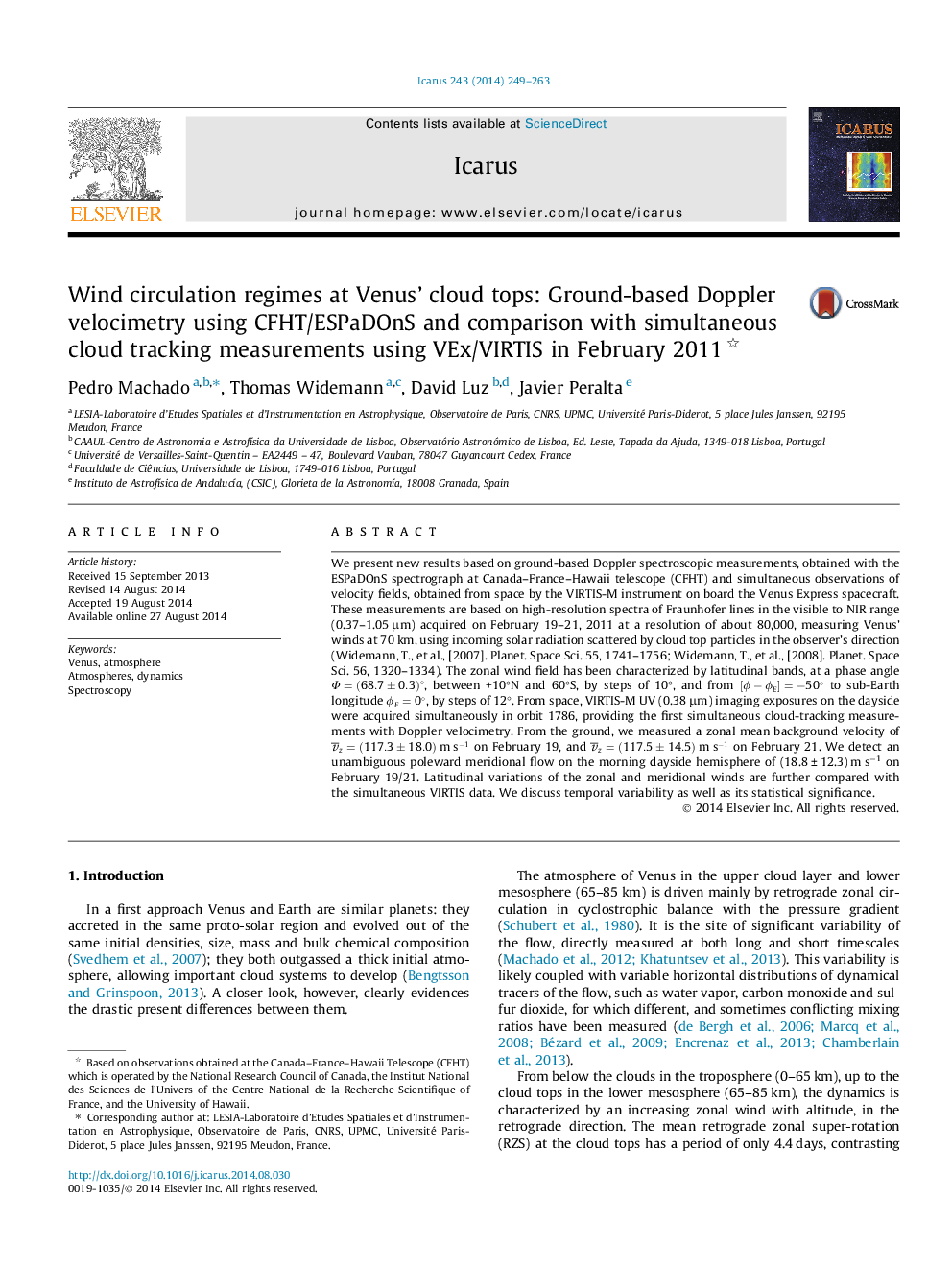| Article ID | Journal | Published Year | Pages | File Type |
|---|---|---|---|---|
| 1773097 | Icarus | 2014 | 15 Pages |
•First inter-comparison of ground-based Doppler winds and coordinated space-based cloud tracked winds at Venus’ cloud-top.•We characterised the latitudinal zonal wind profile and its variability in local time.•We observe zonal wind field velocities of v‾z=117.3±18.0ms-1 on February 19, and 117.5 ± 14.5 m s−1 on February 21.•We present the first unambiguous detection from the ground of a meridional wind flow on the morning dayside.•Wind temporal, local variation at the hour-scale of ±18.5 m s−1 is detected near morning terminator at low latitude.
We present new results based on ground-based Doppler spectroscopic measurements, obtained with the ESPaDOnS spectrograph at Canada–France–Hawaii telescope (CFHT) and simultaneous observations of velocity fields, obtained from space by the VIRTIS-M instrument on board the Venus Express spacecraft. These measurements are based on high-resolution spectra of Fraunhofer lines in the visible to NIR range (0.37–1.05 μm) acquired on February 19–21, 2011 at a resolution of about 80,000, measuring Venus’ winds at 70 km, using incoming solar radiation scattered by cloud top particles in the observer’s direction (Widemann, T., et al., [2007]. Planet. Space Sci. 55, 1741–1756; Widemann, T., et al., [2008]. Planet. Space Sci. 56, 1320–1334). The zonal wind field has been characterized by latitudinal bands, at a phase angle Φ=(68.7±0.3)°Φ=(68.7±0.3)°, between +10°N and 60°S, by steps of 10°, and from [ϕ-ϕE]=-50°[ϕ-ϕE]=-50° to sub-Earth longitude ϕE=0°ϕE=0°, by steps of 12°. From space, VIRTIS-M UV (0.38 μm) imaging exposures on the dayside were acquired simultaneously in orbit 1786, providing the first simultaneous cloud-tracking measurements with Doppler velocimetry. From the ground, we measured a zonal mean background velocity of v‾z=(117.3±18.0)ms-1 on February 19, and v‾z=(117.5±14.5)ms-1 on February 21. We detect an unambiguous poleward meridional flow on the morning dayside hemisphere of (18.8 ± 12.3) m s−1 on February 19/21. Latitudinal variations of the zonal and meridional winds are further compared with the simultaneous VIRTIS data. We discuss temporal variability as well as its statistical significance.
